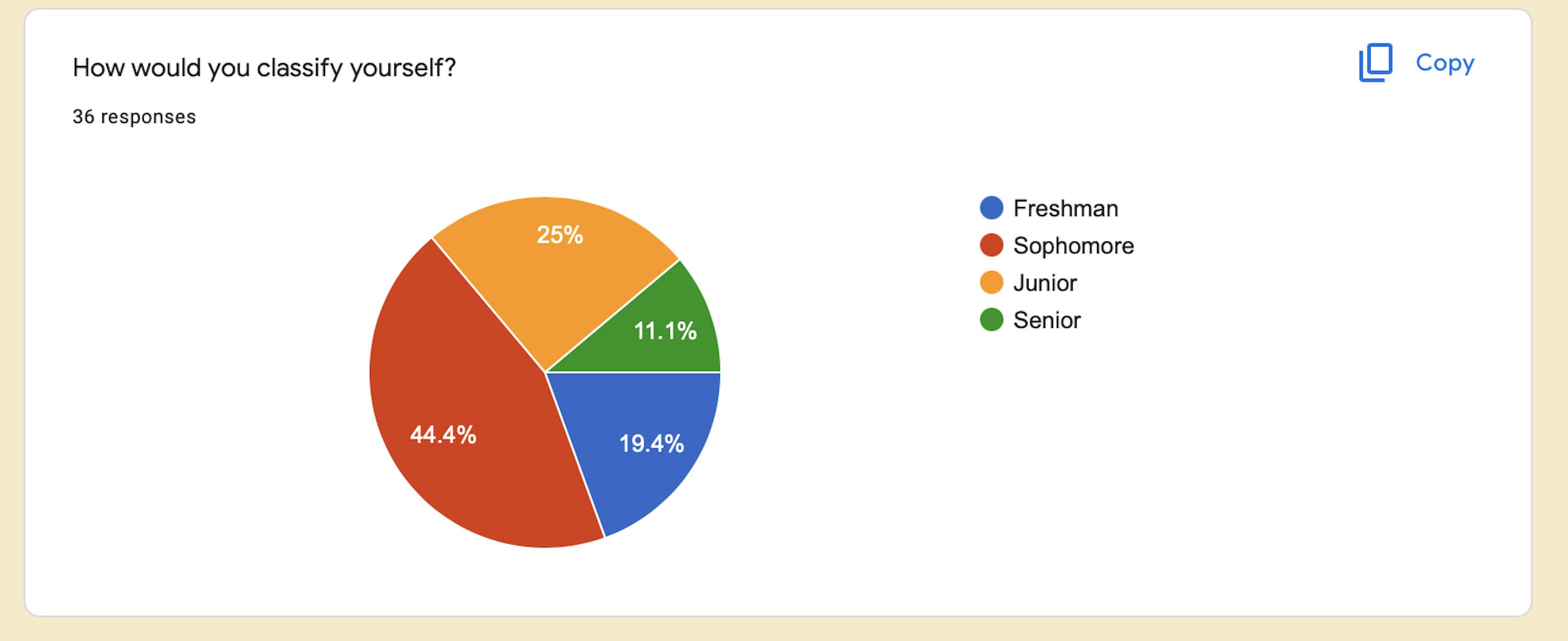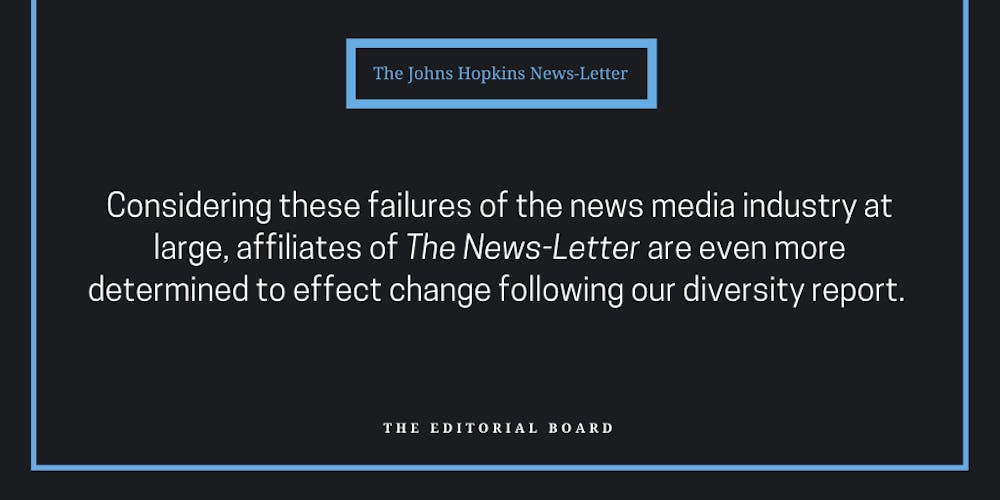Three years ago, The News-Letter conducted an internal review of our staff’s demographics to determine the extent of our representation of the student body. We came away with mixed results and a firm resolve to do better moving forward.
This year, our Public Editor circulated a similar survey to gauge our progress. 36 members of the paper, both staff and contributing writers, responded to our survey over the past two weeks. Of these respondents, 19.4% were freshmen, 44.4% were sophomores, 25% were juniors and 11.1% were seniors.
In some ways, this year’s results demonstrated improvements in diversity from our last survey. For example, as of this semester, 22.2% of our respondents were First-generation, Limited Income (FLI) students. Comparatively, only 4.3% of our staff respondents identified as FLI students in 2019, marking a notable increase in this category’s diversity.

COURTESY OF THE NEWS-LETTER
Most categories, however, only saw subtle changes. Respondents were allowed to choose more than one answer when asked about their sexuality. 75% of respondents identified as straight, which is a slight increase from 2019’s 69.6%. The rest of the responses were dispersed among the remaining categories: 2.8% identified as asexual, 2.8% as bisexual, 8.3% as gay, 2.8% as lesbian, 5.6% as pansexual, 8.3% as queer and 8.3% as questioning. Though polls on sexuality on college campuses are inconsistent, our paper has a notably high percentage of LGBTQ+ staff members, surpassing the national average of 7.1% of US adults.
Ethnically, 55.6% of respondents identified as Asian, 5.6% as Middle Eastern, 5.6% as Black, 5.6% as Hispanic and 38.9% as white. No respondents identified as American Indian or Pacific Islander.
The survey also asked a few new questions this year. Only 5.6% of respondents reported having a disability, which is much lower than the 19% of undergraduates nationwide. Additionally, 13.9% reported being international students, which is similar to the percentage of international students in the Class of 2025.
But how do these statistics compare to the aims we set for our paper three years ago? At the time, we set two main goals: to increase the number of FLI students on our staff and to better reflect the school’s racial demographics in our paper’s makeup.
We’re glad to have seen a significant increase in the percentage of FLI students involved in The News-Letter, with this year’s percentage being over five times higher than in 2019. This representation is also much closer to the breakdown of our current undergraduate body, whose makeup in 2021 was 26% FLI.

COURTESY OF THE NEWS-LETTER
We also saw shifts in racial demographics among our affiliates, observing an 8% decrease in those who identified as white on our staff. However, compared to 2019, the percentage of Black students has not improved by much, with only a slight increase from 4.3% to 5.6%. Using the Class of 2025 as a sample, we recognize that our paper is not representative of the study body on this metric, which we hold as a priority especially given that we reside in a majority Black city.
This fact has not gone unnoticed. In 2020, The News-Letter’s coverage of experiences among the Black community was called into question, when students cited a lack of reporting on issues impacting this community at Hopkins.
This only further supports that it is incredibly important for us to be representative and create a space for all voices to be heard. This call to action is not exclusive to our paper, either.
In 1968, the Kerner report, produced by the National Advisory Commission on Civil Disorder, found that discrepancies in the diversity of news media might actually be driving “the underlying problems of race relations”. In response to the report, news agencies were tasked with obtaining more representative staff by the year 2000.

COURTESY OF THE NEWS-LETTER
However, the issue of underrepresentation and bias among news outlets is still pervasive nationally. For instance, white men are more prominent in newsrooms than they are in the population of U.S. workers. Clearly, there’s still a lot of work left to be done in diversifying newsrooms both at The News-Letter and beyond.
Considering these failures of the news media industry at large, affiliates of The News-Letter are even more determined to effect change following our diversity report. As we elect next year’s paper staff and welcome the newest class of Blue Jays, we commit to conducting more outreach to underrepresented groups and ensuring that all voices are heard on campus.





